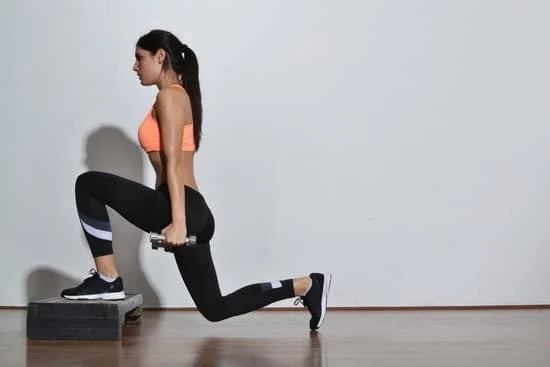What type of exercise is fitness walking? Fitness walking, also known as power walking or brisk walking, has become increasingly popular as people seek out low-impact yet effective forms of exercise. This introductory section will delve into the concept of fitness walking and why it has gained traction among individuals of all ages and fitness levels.
Fitness walking involves walking at a faster pace than leisurely strolls, with the goal of increasing heart rate and burning more calories. It is a form of aerobic exercise that offers numerous physical and mental health benefits, making it an appealing option for those looking to improve their overall well-being.
In this article, we will explore the various aspects of fitness walking, including its physiological and psychological advantages, how it differs from regular walking, the importance of proper form and technique, essential equipment and gear, ways to add variety to workouts, and tips for beginners. Whether you are new to fitness walking or looking to enhance your existing routine, this comprehensive guide will provide valuable insights and practical strategies for optimizing your workouts.
The Physical Benefits of Fitness Walking
Fitness walking, also known as power walking or brisk walking, is a low-impact aerobic exercise that offers numerous physical benefits. It has gained popularity as an effective way to improve overall health and fitness without the need for specialized equipment or expensive gym memberships. In this section, we will explore how fitness walking impacts cardiovascular health, muscle strength, and weight management.
Cardiovascular Health
One of the primary benefits of fitness walking is its positive impact on cardiovascular health. Engaging in regular brisk walking can help strengthen the heart, improve circulation, and reduce the risk of heart disease and stroke. The aerobic nature of fitness walking increases the heart rate, leading to improved endurance and stamina over time.
Muscle Strength
In addition to its cardiovascular benefits, fitness walking also contributes to muscle strength and toning. While it may appear to primarily engage the lower body muscles, including the quadriceps, hamstrings, and calves, fitness walking also activates core muscles for stability and balance. Regular participation in fitness walking can lead to increased muscle endurance and overall strength.
Weight Management
Another important aspect of fitness walking is its role in weight management. As a form of aerobic exercise, brisk walking helps burn calories and promote fat loss when combined with a balanced diet. Additionally, it can increase metabolism both during and after the activity, making it an effective tool for weight maintenance or loss.
The Mental Benefits of Fitness Walking
When it comes to fitness walking, the mental benefits are just as significant as the physical ones. In fact, many avid fitness walkers swear by the positive impact that this activity has on their mental well-being. From stress reduction to improved mental clarity and a better overall mood, here’s how fitness walking can benefit your mind.
Stress Reduction
One of the most notable mental benefits of fitness walking is its ability to reduce stress. Engaging in a brisk walk, especially in natural surroundings, has been proven to lower cortisol levels (the hormone responsible for stress) and release endorphins (the feel-good hormones). This combination can help alleviate tension, anxiety, and overall mental strain.
Mental Clarity
Fitness walking also contributes to improved mental clarity. The rhythmic motion of walking combined with the fresh air and scenery can have a calming effect on the mind. Many people find that going for a walk allows them to think more clearly and problem-solve more effectively than when they are sedentary or indoors.
Overall Mood
Lastly, fitness walking has been shown to enhance overall mood. Just 30 minutes of brisk walking can significantly boost your spirits and create a sense of general well-being. This is due in part to the release of endorphins, but also to the simple act of engaging in physical activity outdoors and getting away from everyday stressors.
It’s clear that apart from its physical perks, fitness walking offers numerous mental advantages as well. Whether you’re looking to reduce stress, gain mental clarity, or simply improve your mood, incorporating fitness walking into your routine may be exactly what you need for a healthy mind and body.
The Difference Between Fitness Walking and Regular Walking
Fitness walking and regular walking may seem like the same activity, but there are key distinctions that set them apart in terms of speed, intensity, and purpose. While both forms of walking offer health benefits, fitness walking is a deliberate and structured exercise regimen with specific goals in mind.
Regular walking is often done at a leisurely pace, with no specific duration or intensity. It is typically used as a mode of transportation or as a way to relax and unwind. On the other hand, fitness walking involves a more brisk and purposeful stride, typically maintaining a pace of 3-4 miles per hour. The goal of fitness walking is to elevate heart rate and increase endurance, making it a more effective form of cardiovascular exercise.
In terms of purpose, regular walking may be primarily for leisure or transportation, while fitness walking is specifically aimed at improving physical health and overall fitness levels. The focus on speed and intensity in fitness walking distinguishes it from casual strolls or everyday errands on foot.
| Regular Walking | Fitness Walking |
|---|---|
| Leisurely pace | Bruise and Purposeful Stride |
| No specific duration or intensity | Maintaining a pace of 3-4 miles per hour |
| Leisure or transportation | Improving physical health and overall fitness levels. |
The Importance of Proper Form and Technique in Fitness Walking
Proper form and technique are essential components of fitness walking that can significantly impact the overall effectiveness of the workout. By maintaining the correct posture and movement, individuals can maximize the benefits of fitness walking while minimizing the risk of injury. Here are some tips and guidelines for ensuring proper form and technique during fitness walking:
- Posture: Keep your head up, shoulders back, and back straight. Engage your core muscles to support your posture throughout the walk.
- Arm Movement: Swing your arms naturally in coordination with your stride. Keep your elbows bent at a 90-degree angle and avoid crossing them over your body.
- Foot Placement: Land on your heels and roll through to push off with your toes. Avoid over-striding, which can lead to unnecessary stress on the joints.
- Breathing: Breathe deeply and rhythmically, inhaling through your nose and exhaling through your mouth. Focus on maintaining a steady breathing pattern throughout the walk.
By paying attention to these key elements of proper form and technique, individuals can ensure that they are getting the most out of their fitness walking routine.
In addition to focusing on form and technique during fitness walking, it is also important to gradually increase intensity and duration to continue challenging the body. This may involve incorporating hills or inclines into the route, increasing speed or adding intervals of faster-paced walking.
Remember that everyone’s body is different, so it’s important to listen to signals from your body during fitness walking. If you experience pain or discomfort, adjust your form or pace accordingly. It is always recommended to consult a healthcare professional before starting any new exercise routine, especially if you have any underlying health concerns.
Overall, maintaining proper form and technique in fitness walking is crucial for reaping its full benefits while reducing the risk of injury. With attention to these details, individuals can enjoy an effective workout that contributes to their overall physical health and well-being.
Equipment and Gear for Fitness Walking
When it comes to fitness walking, having the right equipment and gear is essential to ensure a successful and enjoyable workout. One of the most important components of fitness walking is supportive footwear. Investing in a good pair of walking shoes can make a significant difference in your comfort and overall experience.
Look for shoes that provide ample cushioning, arch support, and stability to protect your feet and reduce the risk of injury. Additionally, proper attire is also crucial for fitness walking. Choose moisture-wicking fabrics that will keep you dry and comfortable, as well as layers that can be easily added or removed based on the weather.
In addition to footwear and attire, there are other items that can enhance your fitness walking routine. For example, wearing a good pair of socks is just as important as wearing proper shoes.
Look for socks made from moisture-wicking materials to keep your feet dry and prevent blisters. It’s also a good idea to invest in gear such as a quality water bottle to stay hydrated during your walks, as well as a pedometer or fitness tracker to monitor your progress.
| Essential Items | Description |
|---|---|
| Supportive Footwear | Invest in good walking shoes with cushioning, arch support, and stability |
| Proper Attire | Choose moisture-wicking fabrics and layer clothing based on weather conditions |
| Socks | Select socks made from moisture-wicking materials to keep feet dry & prevent blisters |
By ensuring that you have the right equipment and gear for fitness walking, you can optimize your workouts and minimize any discomfort or risk of injury. Prioritizing supportive footwear, proper attire, and other essential items will set you up for success in your fitness walking routine while promoting both physical health benefits like improved cardiovascular health muscle strength & weight management along with mental benefits like stress reduction & mental clarity.
Incorporating Variety Into Fitness Walking
When it comes to fitness walking, incorporating variety into your routine can make a huge difference in keeping the workout engaging and effective. Whether you’re a beginner or someone who has been fitness walking for a while, adding diversity to your walks can help prevent boredom and plateauing in your fitness goals. Here are some suggestions for different routes, terrains, and intervals to keep your fitness walking routine exciting and beneficial:
- Explore new neighborhoods or parks: One way to add variety to your walk is by exploring new areas. This could mean walking through different neighborhoods, finding local parks with trails, or even driving to a nearby nature reserve or scenic area to change up the scenery.
- Change up the terrain: In addition to exploring new places, changing the terrain of your walk can also provide a challenge and engage different muscle groups. Consider adding hills or inclines to your route for an added workout, or find trails with varying surfaces such as dirt paths, gravel roads, or sand for a change of pace.
- Incorporate intervals: To boost the effectiveness of your fitness walking workout, consider incorporating interval training. This involves alternating between periods of higher intensity (faster walking) and lower intensity (a more leisurely pace). You can do this by timing specific intervals during your walk or by incorporating landmarks such as light poles or trees as markers for when to increase or decrease speed.
Adding variety to your fitness walking routine not only keeps things interesting but also challenges your body in different ways. By exploring new places, changing up the terrain, and incorporating intervals into your walks, you can ensure that you continue reaping the physical and mental benefits of this enjoyable form of exercise. Remember that mixing things up can also help prevent overuse injuries and give you a well-rounded workout experience.
How to Start a Fitness Walking Routine
In conclusion, fitness walking has become increasingly popular due to its numerous physical and mental benefits. This low-impact exercise has been shown to improve cardiovascular health, build muscle strength, and aid in weight management. Additionally, fitness walking provides mental benefits such as stress reduction, improved mental clarity, and a more positive overall mood.
One key distinction between casual walking and fitness walking is the intensity and purpose. Fitness walking involves maintaining a brisk pace and focusing on achieving specific health and fitness goals. Proper form and technique are crucial for maximizing the benefits of fitness walking while reducing the risk of injury. It is important to pay attention to posture, arm movement, and foot placement while engaging in this exercise.
Frequently Asked Questions
What Fitness Area Is Walking?
Walking is considered to be a form of aerobic exercise, making it part of the cardio or cardiovascular fitness area. It involves repetitive, rhythmic movements that elevate the heart rate and increase oxygen consumption.
What Is Considered Fitness Walking?
Fitness walking is generally considered to be brisk walking at a pace that elevates the heart rate and engages the major muscle groups. It is typically performed for a sustained period of time, often with the goal of improving cardiovascular health and endurance.
Is Walking Cardio or Endurance?
Walking can fall under both cardio and endurance categories. It is cardio because it elevates the heart rate and strengthens the heart and lungs. It is also endurance because it involves sustaining physical activity over an extended period of time, building stamina and overall endurance levels.

Passionate about providing useful information to anyone with an interest in the field of Personal Training, I strive to pass on to our readers quality information and to answer any questions about Personal Trainers, the work they do and how to become one.





